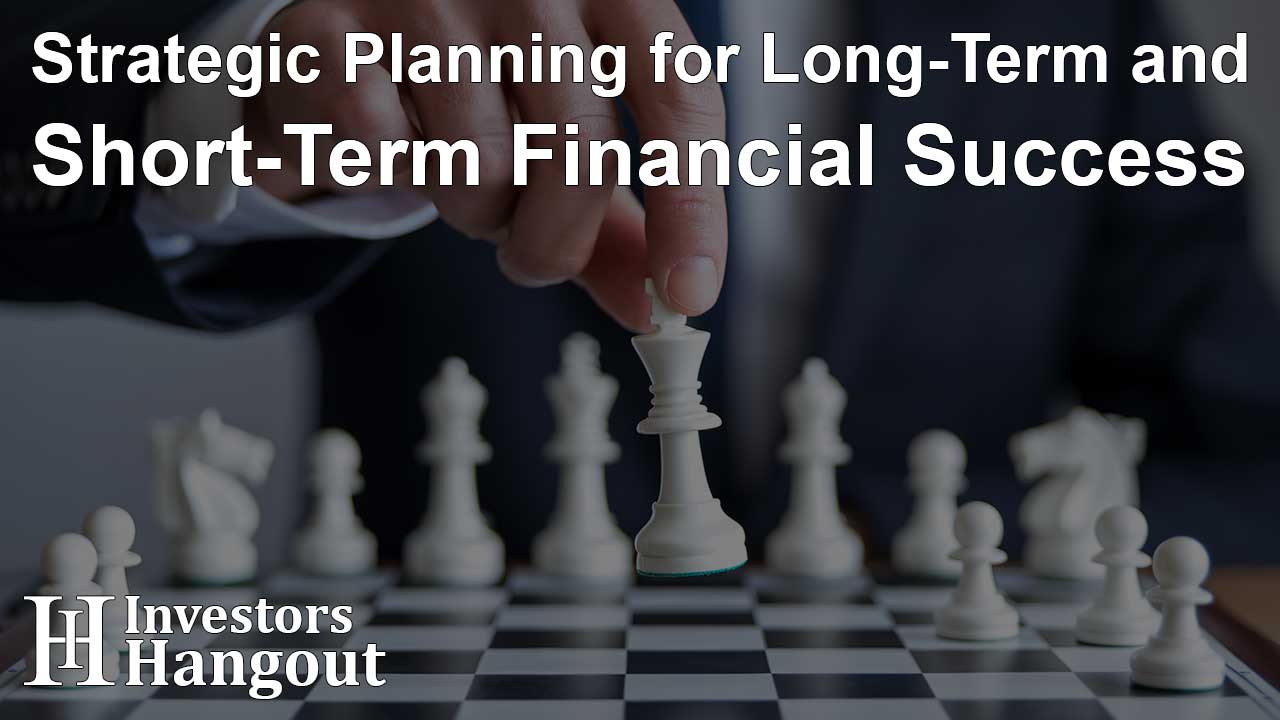Strategic Planning for Long-Term and Short-Term Financial Success

Financial success rarely happens by accident. It requires deliberate planning, disciplined execution, and ongoing adjustments to align with changing circumstances. People often focus either on their short-term needs or their long-term goals, overlooking the importance of balancing them. A strong financial strategy incorporates immediate priorities while building a secure foundation for the future. Strategic planning ensures that resources are allocated wisely, risks are managed, and goals remain achievable. This balance between short-term flexibility and long-term vision provides stability, growth, and resilience in the face of financial challenges.
Establishing Clear Financial Goals
The first step in strategic planning is setting precise financial goals. Without clearly defined objectives, financial decisions can become reactive and disorganized. Short-term goals might include creating an emergency fund, paying down high-interest debt, or saving for a vacation. Long-term goals often focus on retirement planning, buying a home, or funding children’s education. Writing these goals down and attaching realistic timelines makes them more actionable. Clarity helps prioritize spending, guide investments, and avoid distractions that can derail progress. A goal-oriented plan provides motivation, as progress toward each milestone reinforces the value of disciplined planning.
Balancing Short-Term Needs with Long-Term Vision
Successfully balancing immediate financial needs with long-term aspirations is important for sustainable wealth management. Many individuals focus heavily on day-to-day expenses, such as bills, rent, and lifestyle choices, while neglecting future objectives like retirement, education, or major investments. Concentrating solely on long-term goals without addressing current obligations can create stress and financial instability. The key is to develop a plan that allocates resources appropriately, ensuring that short-term necessities are met while preparing for future milestones. Incorporating strategies for achieving financial goals into this framework, such as automating savings and prioritizing debt repayment, allows individuals to maintain flexibility today while steadily progressing toward long-term ambitions, creating a balanced and resilient financial foundation.
Building and Maintaining an Emergency Fund
An emergency fund is a critical short-term priority that simultaneously reinforces long-term security. Life is unpredictable, and unexpected events such as medical emergencies, job loss, car repairs, or major home maintenance can quickly disrupt carefully planned budgets if there is no financial cushion. Financial experts typically recommend setting aside at least three to six months’ worth of crucial living expenses in an easily accessible account to cover such contingencies. This fund should never be treated as an investment for growth but as a protective buffer or insurance against unforeseen setbacks. By having a well-funded emergency reserve, individuals can avoid accumulating high-interest debt and maintain the integrity of long-term investment strategies, providing peace of mind and stability.
Debt Management as a Strategic Priority
Debt can undermine short-term flexibility and long-term wealth-building if it is not managed properly. High-interest debt, particularly from credit cards, can quickly erode financial stability. Strategic planning requires identifying which debts to prioritize for repayment and creating a structured payoff plan. Approaches like the avalanche method, which targets high-interest balances first, or the snowball method, which focuses on eliminating smaller balances to build momentum, can be effective depending on individual preferences. Beyond repayment, preventing new debt through responsible credit use and controlled spending is equally important. Managing debt strategically frees up cash flow and strengthens financial resilience.
Smart Investment for Long-Term Growth
Investing serves as a cornerstone of long-term financial success because it creates opportunities for wealth accumulation that significantly surpass what traditional savings accounts can offer. A carefully diversified portfolio, tailored to individual risk tolerance, financial goals, and investment horizon, helps balance potential returns with manageable levels of risk. Common investment vehicles include stocks, bonds, mutual funds, and real estate, each providing different growth and risk profiles to suit personal preferences. Contributing consistently to retirement accounts, such as 401(k)s or IRAs, provides tax advantages while leveraging the power of compound growth over decades. Even small, regular contributions can build momentum, turning disciplined investing into a reliable method for achieving long-term financial objectives while avoiding impulsive, short-term market decisions.
Budgeting as a Foundation for Success
Creating and maintaining a practical budget is fundamental for achieving short-term stability and long-term financial growth. A well-structured budget provides clarity on income, necessary expenses, discretionary spending, and potential savings, helping individuals allocate resources efficiently. Today, digital tools and budgeting apps make it easier to track transactions, categorize spending, and visualize patterns, simplifying what once was a complicated process. Rather than being restrictive, a budget empowers individuals to make informed choices that align with personal priorities and goals. By consistently monitoring progress, adjusting allocations to reflect life changes, and adhering to financial commitments, budgeting becomes a reliable framework for disciplined decision-making.
The Role of Insurance in Financial Planning
Insurance often goes overlooked in personal financial planning, but it serves as a crucial safeguard against financial setbacks. Health, life, disability, and property insurance all provide layers of protection that preserve short-term stability and long-term plans. Without adequate coverage, unexpected losses can wipe out savings, force debt accumulation, or derail investment strategies. Strategic planning involves evaluating current insurance needs, ensuring adequate coverage, and reviewing policies periodically to reflect changes in lifestyle or family circumstances. By reducing exposure to financial risks, insurance complements savings and investment strategies, creating a more resilient plan.
Regular Review and Adjustment of Plans
Financial planning is not a static process. Life events, economic conditions, and personal goals evolve, requiring adjustments to strategies along the way. Marriage, career changes, new family responsibilities, or even shifting market conditions can all influence financial needs. Reviewing financial plans at least annually helps ensure that budgets, savings rates, investment strategies, and insurance coverage remain aligned with current realities. This ongoing review process allows individuals to make proactive adjustments rather than reactive decisions. Regular evaluations provide confidence that short-term needs and long-term aspirations remain achievable within a dynamic environment.
Strategic planning for financial success requires balancing the urgent with the important, the present with the future. By setting clear goals, maintaining an emergency fund, managing debt, budgeting effectively, investing wisely, and protecting against risks with insurance, individuals can create a framework that supports stability and growth. The most successful financial strategies are flexible enough to address short-term realities while still keeping long-term goals in focus. With regular reviews and adjustments, this balance becomes sustainable, empowering individuals to achieve lasting financial security and peace of mind.
About The Author
Contact Owen Jenkins privately here. Or send an email with ATTN: Owen Jenkins as the subject to contact@investorshangout.com.
About Investors Hangout
Investors Hangout is a leading online stock forum for financial discussion and learning, offering a wide range of free tools and resources. It draws in traders of all levels, who exchange market knowledge, investigate trading tactics, and keep an eye on industry developments in real time. Featuring financial articles, stock message boards, quotes, charts, company profiles, and live news updates. Through cooperative learning and a wealth of informational resources, it helps users from novices creating their first portfolios to experts honing their techniques. Join Investors Hangout today: https://investorshangout.com/
